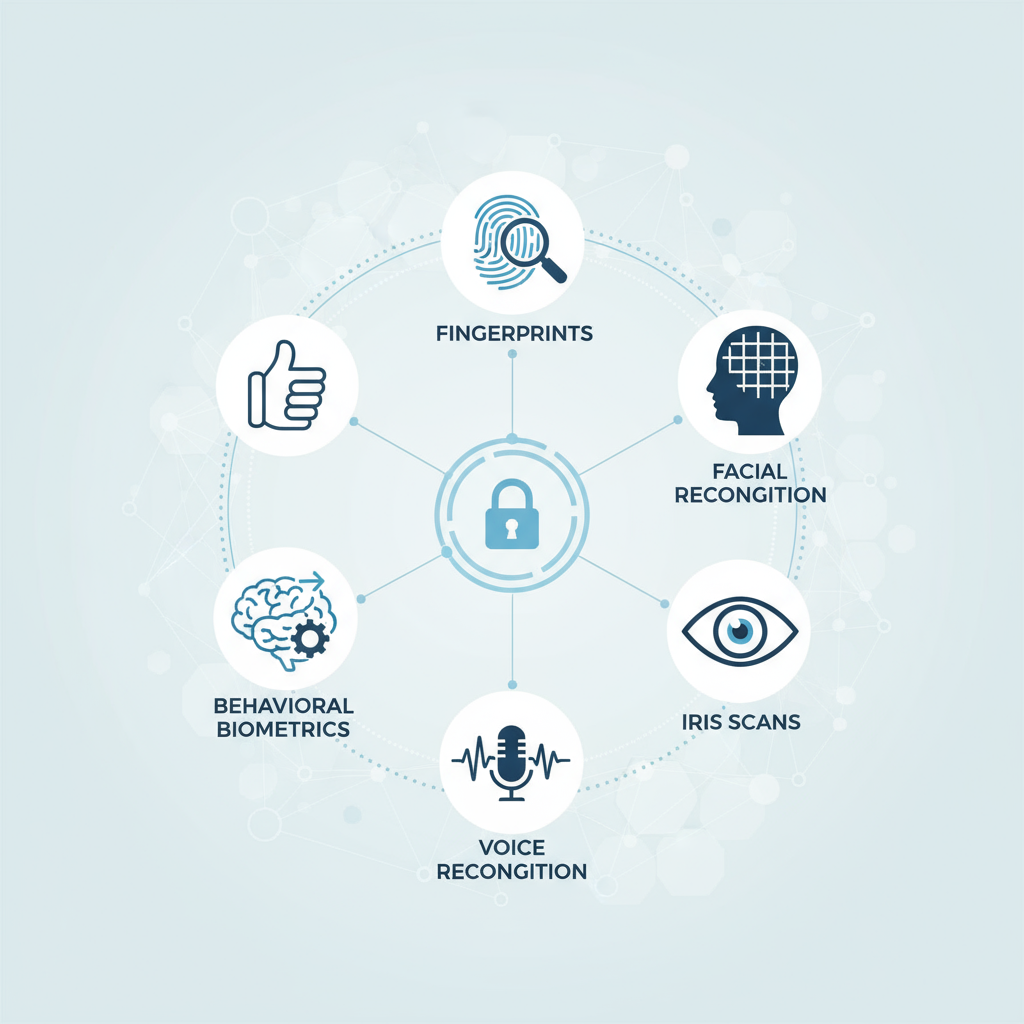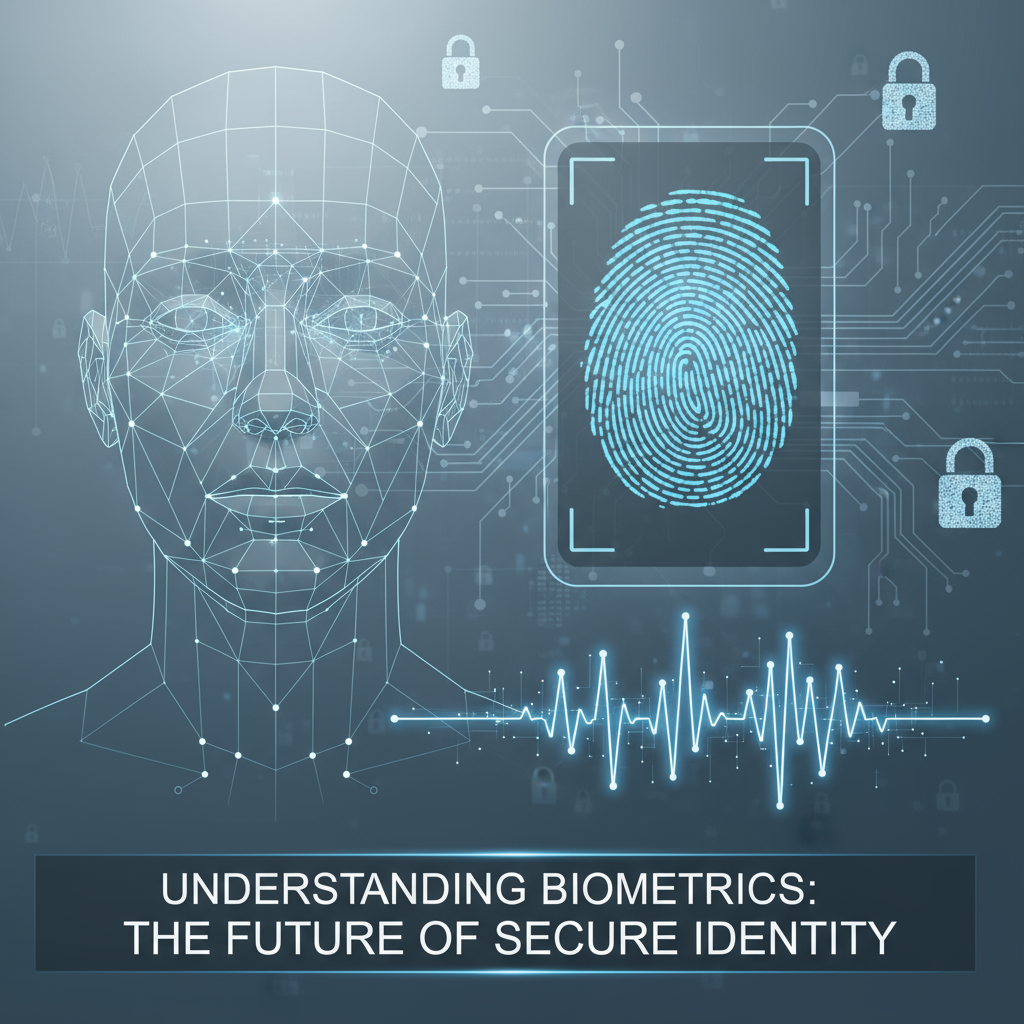Summary
In an increasingly digital world, verifying customer identity securely has become a critical need for businesses. Traditional methods like passwords, PINs, and document verification often fall short in preventing identity fraud and ensuring smooth onboarding. Biometrics, which rely on unique physical or behavioral traits, have emerged as a game-changing Know Your Customer (KYC) tool. This blog explores how biometric technologies improve security, enhance user experience, ensure compliance, and redefine trust across industries such as banking, telecommunications, healthcare, and more.
In today’s fast-paced digital era, businesses must balance security and convenience in their customer verification processes. As online banking, e-commerce, and digital onboarding become standard, cyber threats like identity theft and fraudulent transactions are on the rise. To counter these challenges, organizations are increasingly turning to biometrics as a Know Your Customer (KYC) tool.
The KYC process is an essential compliance measure for financial institutions and other regulated industries to verify the identity of their clients. However, traditional methods such as submitting ID documents, passwords, or one-time passwords (OTPs) often create friction and remain vulnerable to phishing and data breaches.
Biometric authentication—which uses unique biological traits like fingerprints, facial patterns, or voice recognition—offers a far more secure and efficient approach. It not only strengthens identity verification but also enhances user experience by making the process fast, seamless, and reliable.
What Are Biometrics?

Biometrics refers to technologies that identify and authenticate individuals using their unique physical or behavioral characteristics. Unlike passwords or ID cards, biometric traits are intrinsic to a person and nearly impossible to duplicate.
Types of Biometric Identifiers

- Fingerprints: One of the oldest and most widely used biometric methods. Fingerprint recognition uses ridge patterns to identify individuals.
- Facial Recognition: Maps facial features such as the distance between eyes or shape of cheekbones.
- Iris and Retina Scans: Analyze the intricate patterns of the eye, offering extremely high accuracy.
- Voice Recognition: Identifies a person by analyzing speech patterns, tone, and rhythm.
- Behavioral Biometrics: Examines user behavior such as typing speed, walking gait, or mouse movements.
Biometrics work through a process of enrollment, storage, and authentication. During enrollment, a person’s biometric data is captured and converted into a digital template. During authentication, new input data is compared with stored templates to confirm identity.
Because biometric characteristics are unique, durable, and difficult to forge, they have become an essential part of modern KYC verification systems.
The Importance of Biometrics in KYC

The Know Your Customer (KYC) process is designed to verify the identity of clients and prevent illegal activities such as money laundering, fraud, and terrorist financing. Traditionally, this process relied on manual document checks or digital ID verification. However, these methods are prone to human error, delays, and forgery.
Biometrics revolutionize the KYC process by introducing automation, accuracy, and advanced security layers. Instead of relying on what customers have (ID cards, OTPs) or know (passwords, PINs), biometrics depend on who they are, making impersonation nearly impossible.
For industries like banking, telecommunications, and healthcare, biometric KYC ensures faster onboarding, reduces fraud, and maintains regulatory compliance—all while providing a smoother customer experience.
Key Advantages of Using Biometrics as a KYC Tool
Increased Security
The biggest advantage of biometrics in KYC is enhanced security. Since biometric data (like fingerprints or facial scans) is unique to each person, it’s extremely difficult to duplicate or manipulate. This eliminates risks associated with password leaks, stolen IDs, or phishing scams.
Moreover, biometric systems can detect spoofing attempts using liveness detection, ensuring that the input comes from a real, present human being rather than a photo or mask. This makes biometric authentication an invaluable defense against identity theft and unauthorized access.
In financial institutions, for instance, biometric KYC ensures that only verified customers can access their accounts or authorize transactions, drastically reducing fraud incidents.
Enhanced User Experience
Traditional KYC methods can frustrate users due to lengthy verification steps, password resets, or multiple OTPs. Biometrics simplify this by allowing users to verify their identity with a single fingerprint tap or facial scan.
This ease of access not only improves user satisfaction but also reduces onboarding time, enabling businesses to convert prospects into customers faster. For mobile banking, telecommunications, and retail apps, this seamless experience is a competitive advantage that drives customer loyalty.
With biometrics, customers no longer need to remember complex passwords—their identity is their key.
Regulatory Compliance
KYC and Anti-Money Laundering (AML) regulations demand accurate identity verification and traceability of users. Biometrics offer a tamper-proof and auditable verification method that helps organizations comply with these regulations effectively.
Biometric KYC systems create a digital trail for every identity verification event, which can be used for audits and investigations. Furthermore, many governments worldwide are promoting the use of biometric eKYC (electronic KYC) to streamline compliance in financial institutions.
Cost and Time Efficiency
Biometric KYC significantly reduces the time and cost associated with manual verification. Automated biometric systems can handle thousands of verifications in minutes, improving operational efficiency.
Businesses save on manpower, paperwork, and error correction costs, while customers enjoy near-instant approval. This efficiency is particularly valuable for banks, telecom companies, and e-commerce platforms handling high volumes of customers daily.
Use of Biometrics in Key Industries
Banking and Financial Services
The banking sector has been a pioneer in adopting biometric KYC solutions. With rising cases of cyber fraud, banks have integrated biometrics for both physical and digital security.
- Mobile Banking: Customers can log into their mobile banking apps or authorize payments using fingerprints or facial recognition instead of passwords.
- ATMs and Branches: Fingerprint or iris scanners can authenticate users for withdrawals and account access.
- Fraud Detection: Biometric systems detect suspicious login patterns and block unauthorized access attempts in real time.
For instance, several banks in India and Southeast Asia use biometric eKYC integrated with national identity databases like Aadhaar to verify customers within minutes.
Telecommunications
Telecom operators face increasing threats from SIM swap fraud and identity theft. By linking SIM registration with biometric data, telcos can ensure that every SIM card is uniquely tied to its legitimate owner.
- Customer Support Verification: Instead of relying on personal questions or PINs, telecom companies can verify customer identity with a quick face or fingerprint scan.
- Mobile Payments: Biometric authentication strengthens digital wallet security, ensuring safe transactions.
This not only protects users but also helps telecom providers comply with government-mandated KYC requirements.
Healthcare
In the healthcare industry, securing patient data is paramount. Biometrics provide an effective means to authenticate patients and healthcare providers.
- Prevents unauthorized access to electronic health records (EHRs).
- Ensures the right patient receives the correct treatment.
- Reduces fraud in insurance claims and prescription misuse.
Hospitals and clinics now use fingerprint or facial recognition to ensure that only authorized personnel can access confidential medical data.
Travel and Border Management
Airports and immigration authorities worldwide are deploying biometric systems to streamline security checks and passenger identification.
- Biometric Passports: Use facial and fingerprint data for quick identity confirmation.
- Automated Border Control Gates: Reduce waiting times while maintaining strict security.
- Airline Check-ins: Facial recognition ensures that the ticket holder is the actual traveler.
Countries like the UAE, Singapore, and the U.S. have successfully implemented biometric border management systems that combine convenience with national security.
Retail and E-Commerce
In online shopping, biometric KYC enhances payment security and fraud prevention.
Retailers integrate fingerprint or face recognition into checkout systems, ensuring that transactions are made only by the legitimate account holder.
Moreover, loyalty programs and subscription services use biometrics to prevent misuse or identity duplication. This builds trust and enhances customer satisfaction.
Popular Biometric KYC Solutions
Several advanced biometric platforms are empowering organizations to integrate secure KYC processes:
- AwareID: A unified low-code platform offering ultra-fast identity verification, multi-factor authentication, and multi-modal biometrics (face, voice, fingerprint).
- Knomi: A mobile biometric framework that uses face and voice recognition for convenient, multifactor authentication.
- BioSP: Middleware that allows secure management and processing of biometric data between disparate systems.
- AFIX Tracker: An automated fingerprint, palmprint, and latent print identification system with optional facial recognition.
These tools provide customizable solutions for industries requiring robust identity verification, from banking and telecom to law enforcement and healthcare.
Challenges and Considerations
While biometrics significantly improve KYC security, they also come with considerations:
- Data Privacy: Biometric data, being personal and permanent, must be stored securely with encryption and user consent.
- Legal Compliance: Organizations must comply with regulations like GDPR and Data Protection Acts when collecting and storing biometric data.
- Bias and Accuracy: Some facial and voice recognition systems can exhibit bias due to poor training data; thus, fairness and inclusivity are essential.
- System Integration Costs: Setting up a biometric KYC system requires initial investment in technology and infrastructure.
To address these challenges, companies must prioritize transparency, data protection, and ethical use of biometric information.
Future of Biometrics in KYC
The future of biometrics in KYC is bright and promising. Emerging technologies like AI-driven facial analysis, blockchain-based identity storage, and multimodal biometrics (combining fingerprint, voice, and face) are redefining digital identity verification.
Blockchain, for example, allows biometric data to be stored securely without centralized control, minimizing risks of data breaches. Similarly, AI ensures continuous learning, improving recognition accuracy and reducing bias.
In the near future, biometric KYC will become the global standard, empowering industries to verify users in seconds while maintaining the highest levels of trust and compliance.
Conclusion
As fraudsters become more sophisticated, businesses must evolve their security measures. Biometrics, with their precision and convenience, have transformed the KYC landscape by offering a robust, secure, and user-friendly identity verification solution.
Whether in banking, telecommunications, healthcare, or travel, biometric authentication strengthens security while enhancing customer experience. By embracing biometric KYC tools, organizations can ensure compliance, protect sensitive data, and build lasting trust with their customers.
In essence, biometrics make KYC not just a regulatory requirement—but a strategic advantage.
FAQs
Q1. What is the role of biometrics in KYC verification?
Biometrics verifies customers based on unique physical or behavioral traits, ensuring secure, accurate, and instant identity verification during KYC processes.
Q2. How do biometrics prevent identity theft?
Since biometric data (like fingerprints or facial patterns) is unique to every individual and nearly impossible to forge, it effectively eliminates impersonation and unauthorized access.
Q3. Are biometric KYC methods safe and compliant with privacy laws?
Yes, when implemented correctly with encryption, consent, and compliance with privacy laws such as GDPR, biometric KYC is highly secure and lawful.
Q4. Which industries benefit most from biometric KYC?
Industries like banking, telecommunications, healthcare, retail, and travel benefit the most due to their need for secure, fast, and reliable identity verification.
Q5. What are the challenges in implementing biometric KYC systems?
Key challenges include data privacy concerns, infrastructure costs, and potential bias in recognition algorithms, but these can be mitigated with responsible design and compliance measures.
Debabrata Behera is a passionate blogger who writes about digital trends, personal growth, and practical insights, helping readers stay informed, inspired, and ready to achieve success in life.




